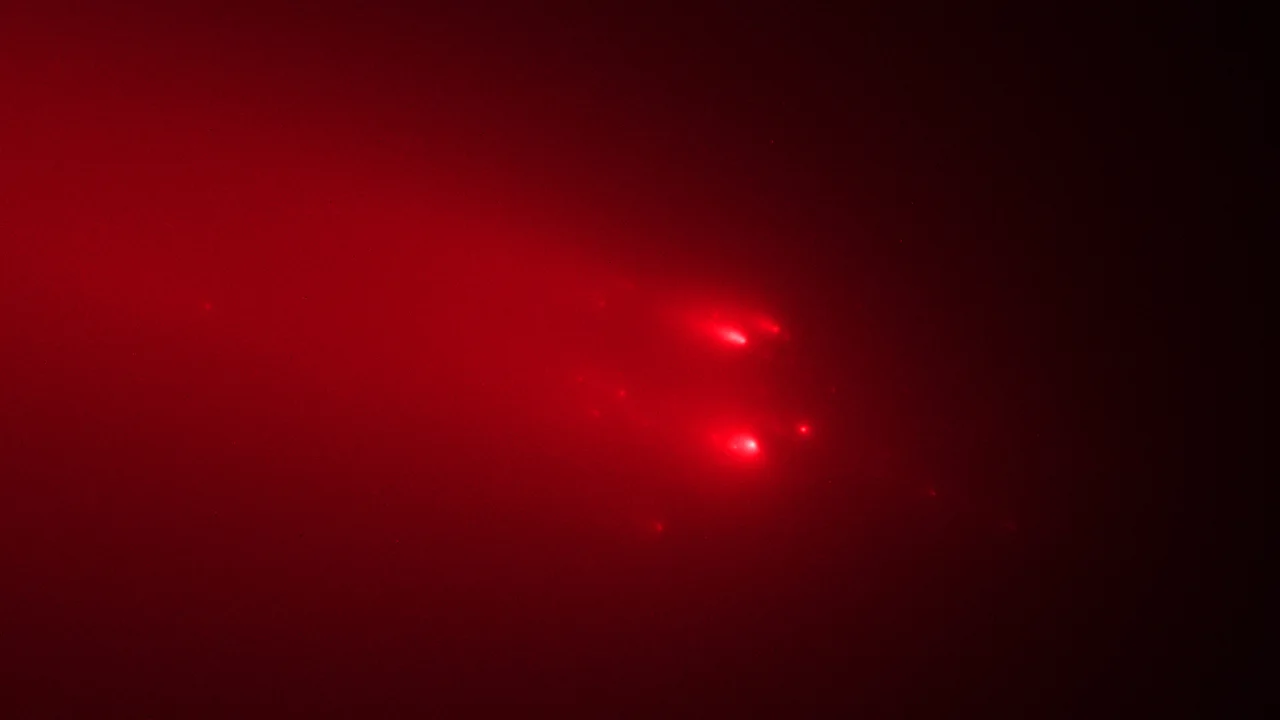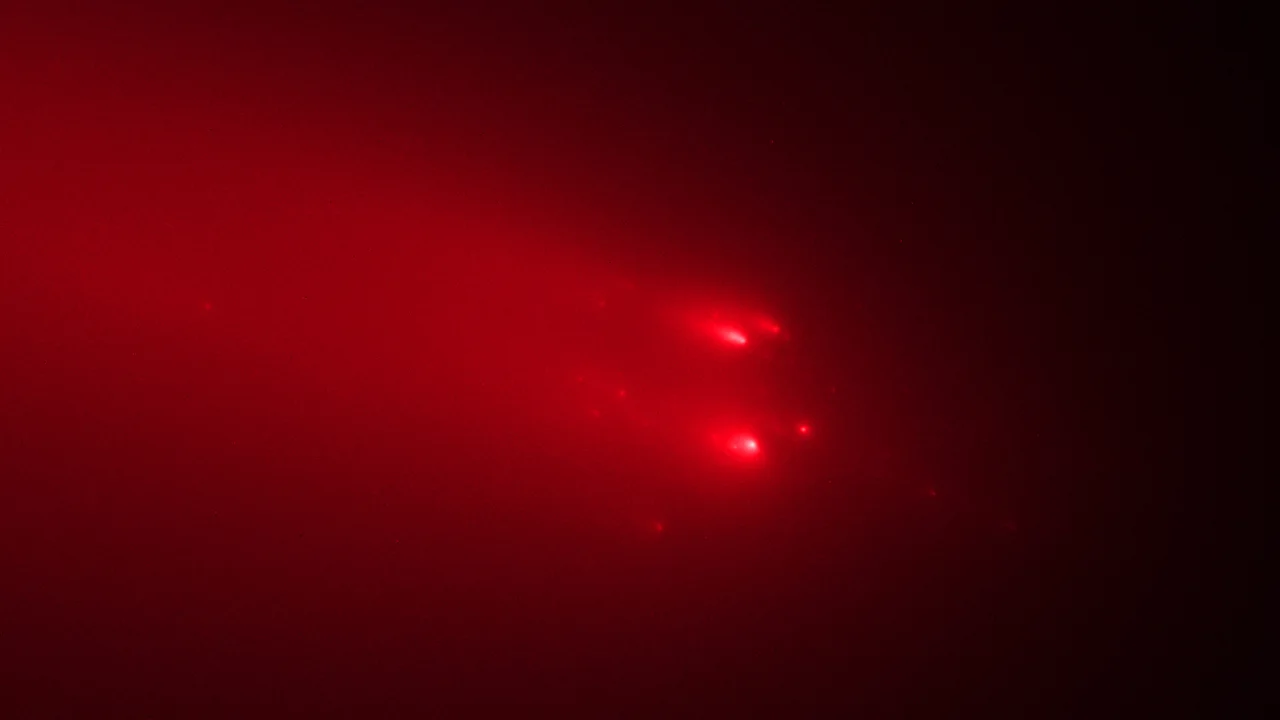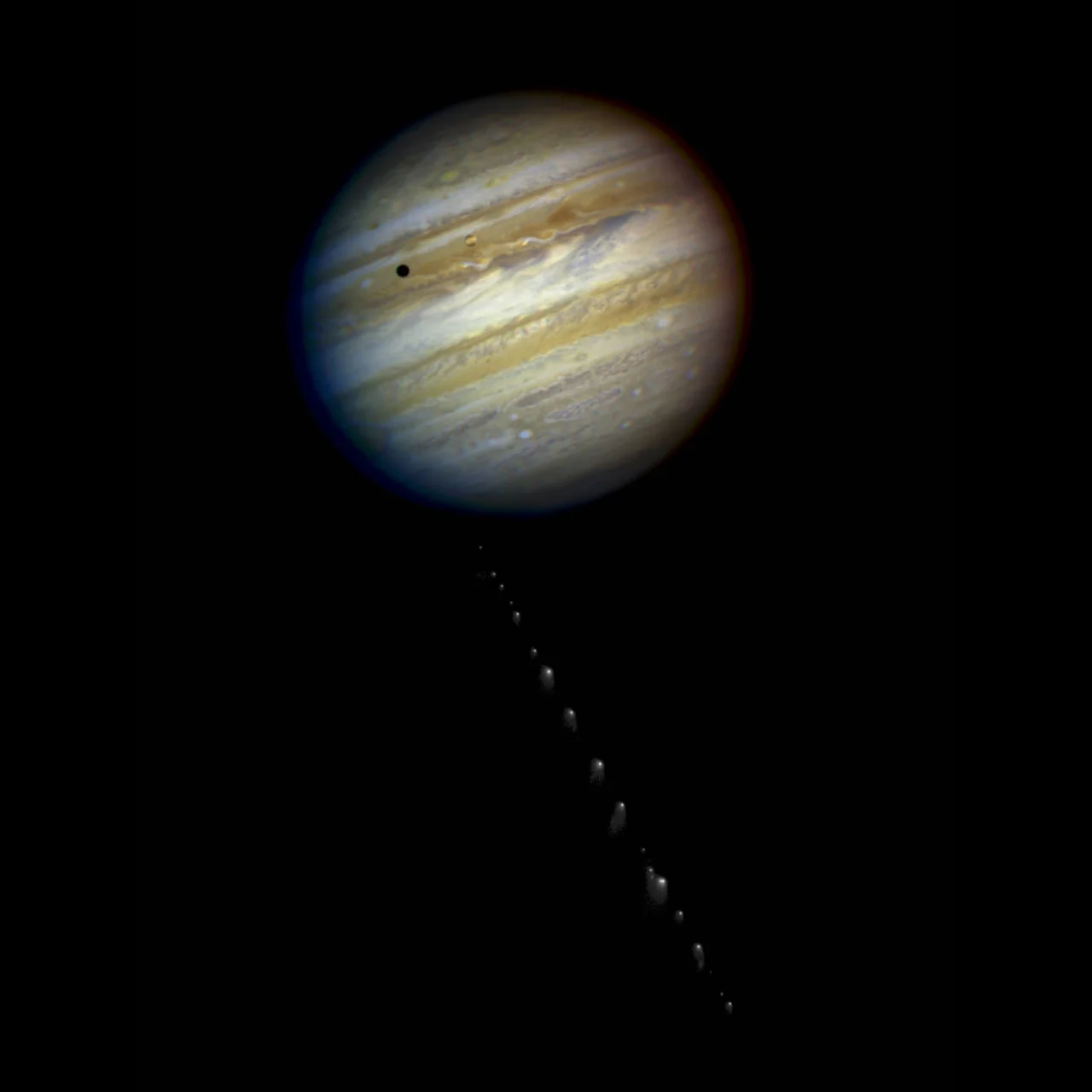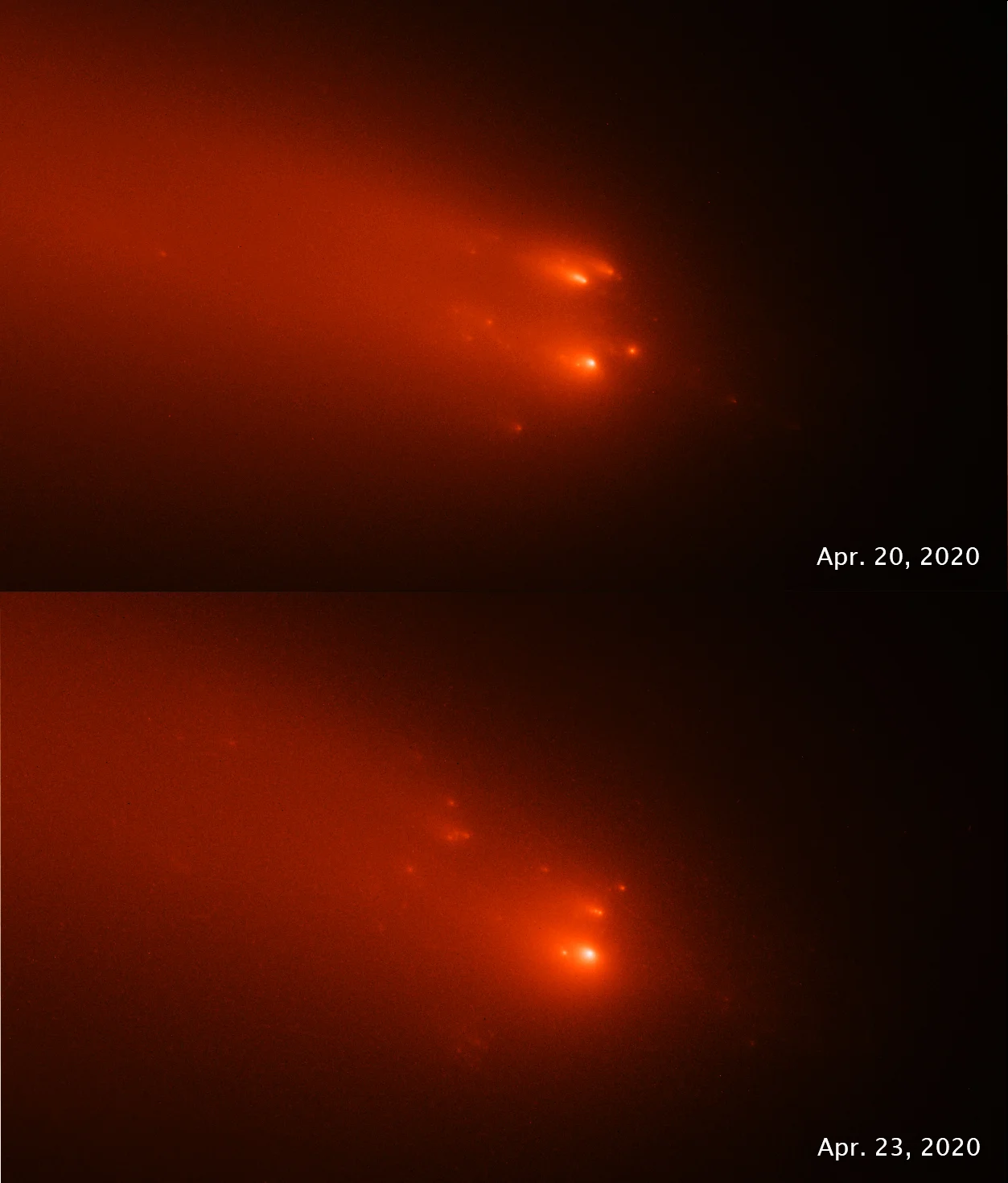
Astronomers trace the strange history of 'doomed' Comet ATLAS
This doomed comet may have been a piece of a prehistoric icy visitor.
Last year, a newly discovered comet suddenly disintegrated while it was still quite far from the Sun. Although ultimately a disappointment for skywatchers, Comet ATLAS turns out to have quite a remarkable history, along with a spectacular celestial sibling still out in space.
On December 29, 2019, a comet was spotted by the University of Hawai'i's Asteroid Terrestrial-impact Last Alert System (ATLAS). Over the next three months, astronomers kept a close eye on comet C/2019 Y4 (ATLAS). It appeared to have made an incredibly long journey from the outer reaches of the solar system, on an orbit thousands of years long, and it was expected to whip around the Sun closer than the planet Mercury.
Then, even while it was still around 150 million kilometres from the Sun — roughly the same distance between the Sun and Earth — the comet inexplicably shattered.

The Hubble Space Telescope captured this false-colour image of fragmented Comet ATLAS on April 20, 2020. Credits: SCIENCE: NASA, ESA, Quanzhi Ye (UMD). IMAGE PROCESSING: Alyssa Pagan (STScI)
Comets have shattered or fizzled out before. Comet ISON, from 2012-2013, is just one example of a potential "Comet of the Century" that ultimately disappointed. It was a 'sungrazer', coming within 2 million kilometres of the Sun's surface. If it had survived its passage, it would have been quite spectacular as it flew past Earth in December of 2013. But, unfortunately, the heat was too much for it. It disintegrated as it emerged around the other side of the Sun. Satellites like NASA & ESA's Solar and Heliospheric Observatory (SOHO) see these 'sungrazer' comets vanishing in the Sun's heat all the time.
It's very unusual to see a comet fly apart when it is still far out from the Sun, though. We did see this with Comet Shoemaker-Levy 9 back in 1994. However, that was due to the comet getting much too close to Jupiter. It was ripped apart by the giant planet's intense gravity. The fragments then went on to slam into Jupiter's cloud tops in a rather spectacular fashion.

The strung-out fragments of Comet Shoemaker-Levy 9 approach Jupiter in 1994. Credit: NASA
In a new study (pdf), University of Maryland astronomer Quanzhi Ye led an international team in examining Hubble Space Telescope images taken of Comet ATLAS. From their research, Ye and his team revealed that C/2019 Y4 (ATLAS) is a strange comet with a rather remarkable history.
Firstly, the fact that it broke apart when it was still farther from the Sun than Earth has Ye calling Comet ATLAS "weird."
"If it broke up this far from the Sun, how did it survive the last passage around the Sun 5,000 years ago? This is the big question," Ye said a Hubble press release. "It's very unusual because we wouldn't expect it. This is the first time a long-period comet family member was seen breaking up before passing closer to the Sun."
Secondly, another clue to its strangeness is how long it took the comet to disintegrate. In their study, the researchers describe Comet ATLAS forming two 'clusters' as it broke up. Clusters C/2019 Y4-A and C/2019 Y4-B each consisted of a few dozen fragments, at least 10 metres wide. Given their similar brightness, they were thought to be composed of roughly the same materials.
However, cluster A took mere days to shatter and be gone. Astronomers reported still seeing parts of cluster B well into the month of May.

These two images from the Hubble Space Telescope were captured on April 20 and April 23, showing the numerous fragments of Comet C/2019 Y4 (ATLAS). While the top image shows cluster A (C/2019 Y4-A) and cluster B (C/2019 Y4-B), in the bottom image, cluster A is gone, while cluster B is still visible. Credits: SCIENCE: NASA, ESA, Quanzhi Ye (UMD). IMAGE PROCESSING: Alyssa Pagan (STScI)
"This tells us that part of the nucleus was stronger than the other part," Ye explained.
Comets are made of frozen water and frozen gases, with rock and dust mixed in. Their composition isn't even, though, so some parts can be rockier (and perhaps more resilient) while others are icier (and thus more fragile).
Thirdly, Ye and his colleagues speculate that Comet ATLAS can be traced back to a larger comet that would have last passed around the Sun roughly 5,000 years ago, in prehistoric times.
How did this apparently fragile piece survive its last passage? They believe it could be that ATLAS was a more icy fragment of the whole, which broke away after the parent comet had already rounded the Sun. According to the research paper, this would have "shielded the interior ice from the intense solar heat."
If Comet ATLAS was an icy fragment of this larger prehistoric comet, what about the rest of it? Based on their similar orbits, the researchers believe the more resilient sibling of C/2019 Y4 (ATLAS) could be the Great Comet of 1844 (C/1844 Y1).
Unfortunately, to see this comet and compare the data from the two, we will have to wait close to 3,000 years for C/1844 Y1 to return. It swings around the Sun again sometime in the 50th century.






